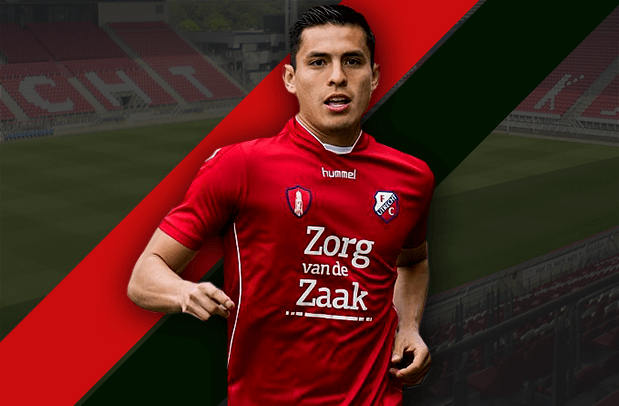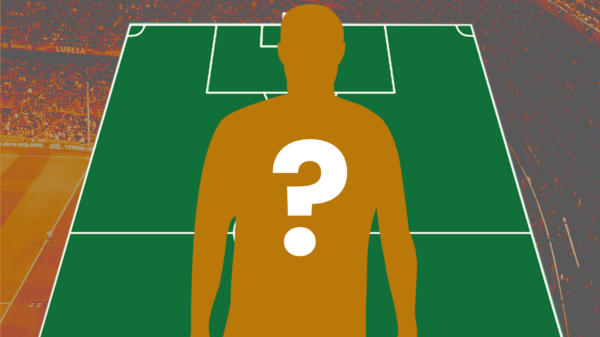Griffin O’Neill takes an in-depth look at one of America’s latest talents, Rubio Rubin who currently plays for Dutch side, Utrecht.
The United States men’s team has a recent history of very talented forwards — from Landon Donovan and Hercules Gomez to Clint Dempsey and more recently Bobby Wood. That tradition is set to continue with a twenty-year-old striker by the name of Rubio Rubin. Currently playing for Utrecht in the Eredivisie, Rubio has been a consistent figure in the Utrecht first team and United States U-23 team for three years now.

Who is Rubio Rubin?
Born in Beaverton, Oregon on March 1, 1996, Rubin is eligible to play for either USA or Mexico internationally but decided from a young age to play for the red, white, and blue. He played for different high schools and club teams in the United States, including the prestigious IMG academy in Florida, until he was picked up by Utrecht in 2014. He was signed to a four-year contract; he played 90 minutes and got an assist in his professional debut against Willem II. In the 2014/15 season he played in 28 Eredivisie games, starting 21, and was able to bag three goals to go along with six assists. Things didn’t go as well for Rubin in 2015/16, though. He sustained a bad foot injury and was injured for all but seven games. Even with this injury, he was still able to manage two goals in three Europa League playoff games. Since recovering from surgery Rubin has started the first two games of the new Eredivisie season for Utrecht. This season looks to be his most important yet; with Sebastian Haller forcing him into a slightly new position and also coming of off almost full season foot surgery last year, Rubin has to have a good year for his future to be secure with Utrecht. If he can have a good year this year he will be well on his way to earning a big money move to a big time club. Also in the penultimate year of his contract Rubin will have to impress to ensure his future with Utrecht stays rock solid until he can go to the next level.
During his breakout year in 2014 Rubin was finally called up for the USA after impressing in youth levels up to U-23. He started his first game against Colombia and played impressively, nearly scoring off a glancing header. After the game the States’ coach, Jurgen Klinsmann, praised him for his maturity on such a big stage considering Rubin’s age. With Clint Dempsey continuing to only show flashes of his former self and Jozy Altidore also not consistently stepping up, Rubin is in a race with other U-23 international Jordan Morris to fill up an electric partnership with Bobby Wood.
What is his Style of Play?
In Utrecht’s preferred 4-1-2-1-2 diamond system, Rubin has more recently played as a slightly deeper-lying striker in support of their talismanic striker Sebastien Haller. In this system Rubin plays similarly to how Wayne Rooney did when Robin Van Persie was up front for Manchester United. The main difference between Rooney and Rubin is that Rubin is a more technically gifted player, able to use skill on the ball and dribble past defenders with much more ease than Rooney.
What are his Strengths?
Rubin may not be the quickest of players, but he makes up for his slight lack of pace in his spatial awareness and ability to set up teammates. His best quality is his versatility, though. For Utrecht he has played on both wings, as a center-forward, and as a more attacking midfielder. Even though he is constantly switching positions, Rubin is still able to be consistent and adaptable to the different jobs demanded by whatever position he plays.
One of Rubin’s more surprising strong-points is his ability to play an accurate pass on the dime. While playing on the right wing he is also able to play a very good cross right into the feet or onto the head of one of his teammates. This is emphasized by the fact that he has more assists than goals in his professional career (Eleven assists to nine goals).
What are his Weaknesses?
The biggest problems with Rubin’s game are his aforementioned lack of pace and the fact that he isn’t the most natural finisher. In a crucial game against Willem II, Rubin was played a ball with back to a defender. He was able to turn the defender very well, but wasn’t able to score, scuffing his shot wide at the front post with his preferred right foot. Though this particular miss does highlight his ability to find space and make intelligent runs, his lack of a consistent finishing touch is the largest thing hampering Rubin’s development at this point. A lot of Rubin’s goals also come off one or two touch finishes from close range as well, which puts his goal tally up but doesn’t impress too much on the highlight reel.
Rubin’s weakness in the pace department isn’t as big of a problem as his finishing. He is a very skilled dribbler, and in a game against Vitesse in 2015 he showed why this isn’t much of a problem. He was lined up on the right wing and received a through ball down the line. He squared up against left back Arthur Kruiswijk, did a double stepover to cut across the eighteen, then did a Cruyff turn (which left two defenders on their backs), and ultimately played a ball to a teammate who squared it across for a goal. This play highlights Rubin’s propensity for flair and ability to make the decision on whether to play the ball to a teammate or take it himself.
The biggest concerns a big club might have about buying Rubin are his lack of experience playing professional football and his lack of goals. Though he may be able to play many positions, his main position is striker; however, a return of nine goals in thirty-seven Eredivisie games isn’t exactly top quality. He is a great talent and has the potential to grow into something special, but he needs to work on his goals in top flight games before a big club comes calling.
Read all our Scout Reports here
- Scout Report: Alphonso Davies | Speedy Canadian winger - August 15, 2018
- Talent Radar: 5 breakthrough players to watch in the Bundesliga - August 15, 2018
- Scout Report: Patrick Cutrone | AC Milan’s sensational young forward - November 7, 2017
























































